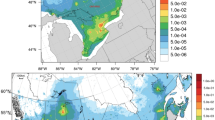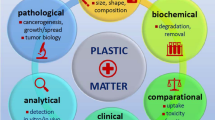Abstract.
Polycyclic aromatic hydrocarbons (PAH) have become an ubiquitous upper soil component as a consequence of industrialization involving a multitude of combustion processes. Ingestion of PAH contaminated soil is considered to be a major exposure route, specifically for small children living on these soils. Health risk assessment is based on extrapolations from data obtained via studies performed with pure chemicals. Additionally it is assumed that after oral intake all PAH present in the soil will be absorbed by the human body. Interactions with the soil matrix, however, may modulate the bioavailability of PAH. In this study, we examined the absorption and excretion of PAH in rats orally exposed either to industrially contaminated soils or pure model compounds as anthracene, pyrene and benzo(a)pyrene (B[a]P). The model compounds and the metabolites, 1-hydroxypyrene (1-OH-pyrene) and 3-hydroxybenzo(a)pyrene (3-OH-B[a]P), were measured in blood, feces or urine by means of HPLC with fluorescence detection. Because of rapid biotransformation only minimal levels of unmetabolized anthracene, pyrene and B[a]P in blood could be detected. The pharmacokinetic parameters were nonlinear and suggestive of enterohepatic cycling. Only low levels of the compounds were excreted unchanged in feces whereas the levels of the metabolites were considerably higher in feces and urine. These results indicate that the dosed PAH are largely absorbed by the gastrointestinal tract, subsequently metabolized and excreted as metabolites via urine and feces. Significant differences between the soil-treated group and the pure mixture-treated group could be observed; the soil-treated group showed higher fecal excretion of unchanged pyrene (0.5 versus 0.2% of the original dose) and B[a]P (1 versus 0.3%), lower excretion of 1-OH-pyrene in feces (5.1 versus 17.0%), and lower excretion of 1-OH-pyrene in urine (0.2 versus 3.4%). The fecal excretion of 3-OH-B[a]P between the two groups was similar (8.8 versus 8.8%). These results suggest that the soil matrix is capable of reducing the absorption of at least pyrene. Therefore, exposure risk assessment models assuming complete bioavailability of soilmatrix-bound PAH probably overestimate the endogenous dose.
Similar content being viewed by others
Author information
Authors and Affiliations
Additional information
Received: 18 April 1996/Accepted: 27 March 1997
Rights and permissions
About this article
Cite this article
van Schooten, F., Moonen, E., van der Wal, L. et al. Determination of Polycyclic Aromatic Hydrocarbons (PAH) and Their Metabolites in Blood, Feces, and Urine of Rats Orally Exposed to PAH Contaminated Soils. Arch. Environ. Contam. Toxicol. 33, 317–322 (1997). https://doi.org/10.1007/s002449900259
Issue Date:
DOI: https://doi.org/10.1007/s002449900259




